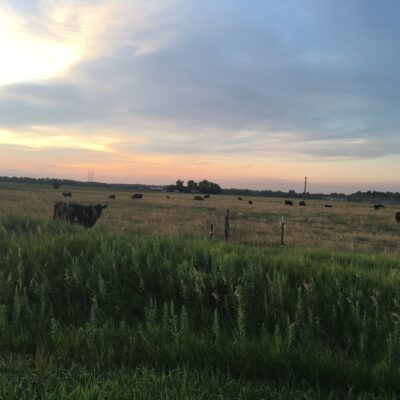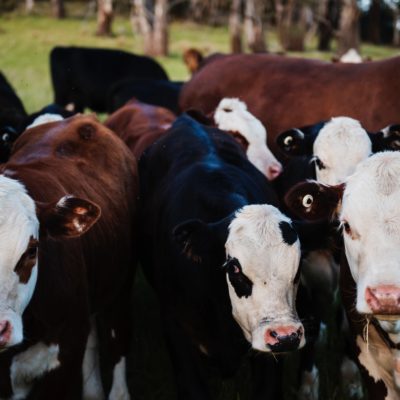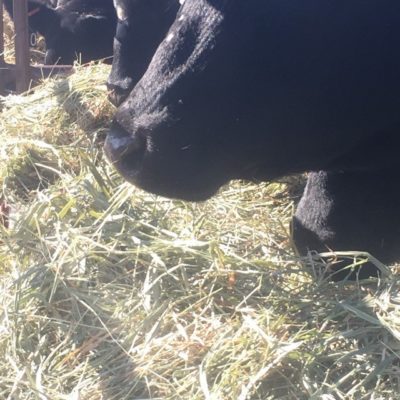Recently, I attended the Wyoming Stock Growers Association’s Cattlemen’s Convention and Tradeshow in Gillette, Wyoming. While driving up I noticed the diversity in the livestock in rangeland grazing.
Most grazers were beef cattle. I also saw horses, sheep with lambs and goats with kids. Additionally, deer and pronghorn were sharing many of these rangeland grazing areas. Once I arrived, a customer spoke with me about the importance of his Ward Laboratories, INC. forage analysis. He said the feed composition had an impact on alpaca fibers.
All of this got me thinking about the challenges of rangeland grazing. With the diversity of the livestock, producers need to take into account which species are consuming specific plants and what part of the plant. The diversity of livestock, wildlife, and rangeland forage species must be considered when grazing rangeland. Additionally, the seasonal and year to year variation in nutrient values of these feed-stuffs will have an impact on grazing plan success or failure.
Grazers, Browsers, and Everything Between
Rangeland herbivores can be categorized into grazers, browsers and intermediate feeders. Grazers are non-discriminating with feed selection. Browsers conversely are very selective. Intermediate feeders are less discriminating than browsers, but more selective than grazers.
Grazers
Grazers typically have a wide mouth good for grabbing large bites of forage in front of them. Because the feed they are consuming is typically lower in protein and higher in fiber, grazers have large body size to accommodate large gut size and gut capacity. Grazers utilize large populations of microbes, either in the rumen or hind-gut to digest feed-stuffs. Fermentation allows grazers to meet nutritional requirements consuming high volumes of low quality feed. Horses and cattle are grazing livestock.
Browsers
Browsers on the other hand have very small mouths and are highly adapted to select high protein, low fiber portions of plants. For example, pronghorn can survive mostly on sagebrush leaves consuming few stems and a small amount of prairie grasses. Pronghorn have narrow muzzles for selection and small rumens for fermentation therefore, a smaller body size. Additionally, these browsers have saliva that binds to tannins in leafy portions of vegetation that can be detrimental to other species. Goats are the only true browsing livestock species.
Intermediate Feeders
Other livestock and wildlife species consume a more varied diet. These animals feed on easily accessible grasses, leaves and fruit. Sheep, llamas, and alpacas all fall into this category. It should be noted sheep are more similar to grazers and have a relatively large body size and gut capacity. Llamas and alpaca’s however are pseudo-ruminants and therefore have only a three compartment stomachs. Therefore, these pseudo-ruminants have a smaller gut capacity and are more similar to browsers.

Determining Nutritional Value of Rangeland Grazing
As we have established, different types of herbivores are utilizing different vegetation on rangeland. It is important to match livestock species diet with their nutrient requirement. Matching nutrient requirements is not static, even within species. Peak lactation is the physiological stage at which nutritional requirements are highest. Non-lactating animals in the second trimester of gestation typically have the lowest requirements.
Supplement Design
When grazing rangeland, designing supplementation strategies can be a challenge do to the dynamic nature of animal requirements and plant nutrient content. Typically, it is recommended to test the forage for macro nutrients. Use a forage report to determine strategies for protein or energy supplementation. Then, a mineral analysis can be used to design a custom mineral supplement or choose an existing supplement to best match the animal’s nutrient requirements with the pitfalls of the forage content.
Under rangeland conditions, collection of samples can be difficult. These difficulties come from rugged terrain, adverse weather, and lots of area to cover. However, these samples are worth the time and effort. Using book values can result in under feeding livestock. Depending on the geography of the open range, book values may be different for the same plant species. For example, dry hot arid climates of New Mexico are going to produce forages of less protein and lower energy values than the same plants on Wyoming ground which has been blessed with plentiful rain this spring. Furthermore, this years forage nutrient values a likely different from the last couple of years when drought was a concern in Wyoming. Livestock without proper nutrition can not perform at their optimal level. Conception rates, weaning rates and other measures of performance may suffer as a result.
Rangeland Grazing Plans
Producers must keep in mind the animal they are feeding and collect browse or bulk forage accordingly. Grazing patterns across the landscape may also vary, so it is important to observe animals and imitate their grazing as closely as possible. Collecting a sample exactly as the animals would is impossible, but our best attempt can provide valuable data. Taking feed samples for rangeland will be difficult and time consuming, but they can help in decision making.
Feed reports can help determine best supplementation strategies, as well as which groups of animals should graze specific locations and during what season. Producers can also use knowledge of diet variation to graze cattle or horses along side intermediate or browsing livestock without competition for feed.
When taking samples for rangeland grazing, consider that you are creating your own library to reference. Looking for patterns in the nutrients available in different forages at various seasonal time points and locations can help determine future rangeland grazing plans.




